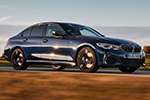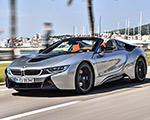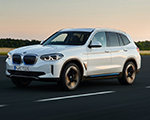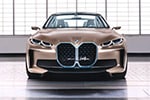2026 is shaping up to be a turning point for BMW. The company faces a volatile global economy, new competition from EV upstarts, and the challenge of keeping its “Ultimate Driving Machine” spirit alive in the digital age. Yet inside this uncertainty lie enormous possibilities. With the Neue Klasse architecture, next-generation AI systems, and rapid growth in markets like India, BMW has a real chance to redefine what a modern performance brand can be. Here are the three biggest opportunities that could shape the next chapter of BMW’s story.
Capitalizing on the Passion for Driving Performance
With the steady adoption of self-driving cars and growing congestion in cities around the world, there was a sense that consumers were losing interest in driving and racing, which are essential to BMW’s brand identity (“Ultimate Driving Machine”). However, recent reports indicate that those fears may have been overstated.
Case in point: A McKinsey study found that EV buyers in China, America, and Europe generally prioritize driving performance and handling over brand reputation, advanced driver assistance systems (ADAS), and digital car experience. Meanwhile, another study showed that 86 percent of customers rated driving enjoyment as the most important criterion for buying a luxury car. Validating these findings is the fact that the M division now accounts for about 10 percent of BMW’s overall sales—a record high.
Needless to say, as BMW faces stiffer competition from American and Chinese upstarts like Tesla, Rivian, BYD, and NIO, its performance heritage could emerge as a key differentiator.
Using Its Legacy Advantages to Lead in Artificial Intelligence
As per the Boston Consulting Group (BCG), 74 percent of companies are struggling to generate tangible value from AI. Nonetheless, those who do see a 50 percent higher revenue growth and 60 percent higher total shareholder returns (TSR). Frankly, this is an extraordinary opportunity for BMW—if it is willing to get out of its comfort zone and embrace a software-led business strategy. And that seems to be the case with the software-defined architecture for future electric vehicles.
Make no mistake, legacy manufacturers do have difficulty in going digital. Yet, BMW can still be an outlier because it’s partly family-owned (which allows it to focus more on long-term goals) and has a history of readily adopting advanced technologies. Remember, the Munich-based carmaker was named the most innovative automotive group by the Center of Automotive Management (CAM).
That said, achieving this AI dominance would necessitate shifting towards a more software-centric culture, increasing partnerships with American and Chinese I.T. giants, and maximizing the potential of Germany’s local AI talent (which is ranked third in the world after the United States and India).
Investing in Emerging and High-Growth Markets
The Western car markets have become somewhat saturated, whereas China will not provide unlimited growth opportunities. Naturally, BMW must expand into other geographies like the Global South, which will account for 62 percent of the world’s population and 20 percent of its GDP by 2030.
The most obvious potential is in India, which is the world’s third-largest car market and the fastest-growing G20 economy. Notably, 78 percent of German companies intend to increase their investments there by 2029. In fact, BMW is already the second-largest luxury auto brand in India, albeit it can substantially increase its sales figures of 15,721 units, given the recent tax reforms and the possibility of an India-EU free trade agreement (FTA).
Keep in mind, though, that emerging markets often have an unpredictable growth trajectory, hence BMW shouldn’t “chase rainbows” and must work closely with the EU policymakers to identify the most favorable destinations for long-term investments.








































































